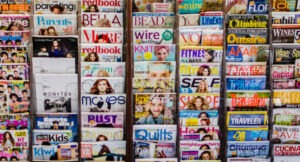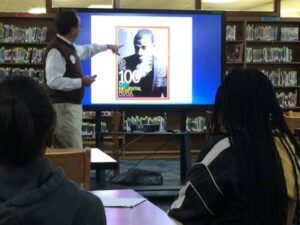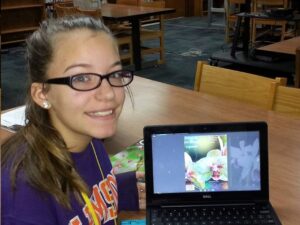Magazine Literacy: Applying media literacy to periodicals
By Frank W Baker
(NOTE: I previously addressed this topic in two blogposts for Middleweb.com
See also our webinar: Magazine Media Literacy in a Time of Coronovirus)
At a recent hands-on class with 5th grade media arts students in upstate South Carolina, I learned that they had no experience with print magazines.
I have conducted this magazine media literacy activity many times, and was quite surprised when the library media specialist told me she had no magazines for them to read in her library. (NOTE: I’ve been inside many school libraries and this was a first for me.)
I see magazines everywhere—from the doctor’s office, to the grocery store and pharmacy checkout lines, to the large displays at Barnes & Noble bookstores.

I subscribe to several magazines at home and I typically save them for a time when I can use them. (my dentist saves me magazines too.)
I developed this activity which is meant to demonstrate media literacy’s two goals-analysis + production. I also want students to have fun while learning at the same time.
On day one, I present a short MAGAZINE COVER 101 introduction, followed by distribution of magazines purposely outside their reading level and interest.

For example, several years ago, I displayed TIME Magazine’s cover featuring Jay-Z as one of the 100 most influential people. They don’t read TIME. But they know the artist.
The brief lesson includes calling attention to the layout, the font, the colors. Questions are asked: why are some words larger than others; what techniques are used to get your attention; where do your eyes go on the cover; what might his facial expression convey? I want them to realize that a graphic design/artist has many things to consider and many techniques to employ.
It also includes questions like “who is the audience for this publication?”
Now many don’t know how to answer that question, so I direct them to the back cover advertisement. The ads in the magazine are aimed at a specific demographic and if they can identify who the target audience is, then they’ll know who the magazine hopes its readers are.
So with a class of about 20 -30 students, I go around the room asking each of them to describe what they see on their cover. Often they will need some prodding. (Example: why is there so much red–what do you think that might be meant to convey?)
On Day 2, we reconvene, but this time in the library or computer lab. Their goal (for the 45 minutes we have together) is to recreate the cover of the magazine they were previously assigned.
This was the creativity starts. Most of the students are already familiar with the magazine cover software that is pre-loaded on their computers. So they go to work right away.
As they begin designing, I walk around the room observing and answering questions.
The photo below is typical of student reaction: they are extremely proud of the final product. And in the case of the young lady below (who was assigned ORCHID Magazine) I felt that her cover rivaled the original.

Years later, the educator who had invited me into this classroom told me it was the most beneficial, educational and productive activity ever. And she said she had continued doing it since.



